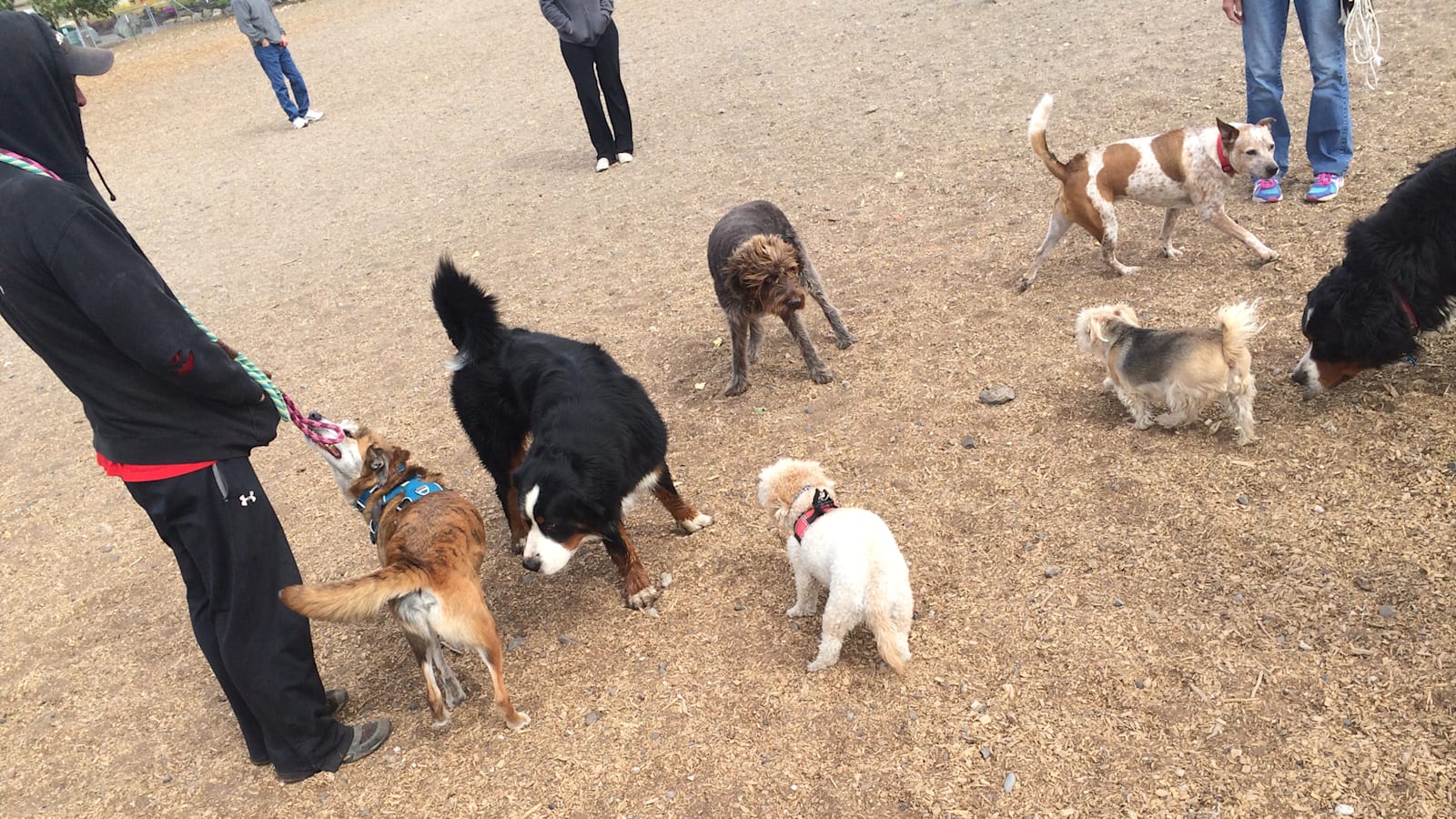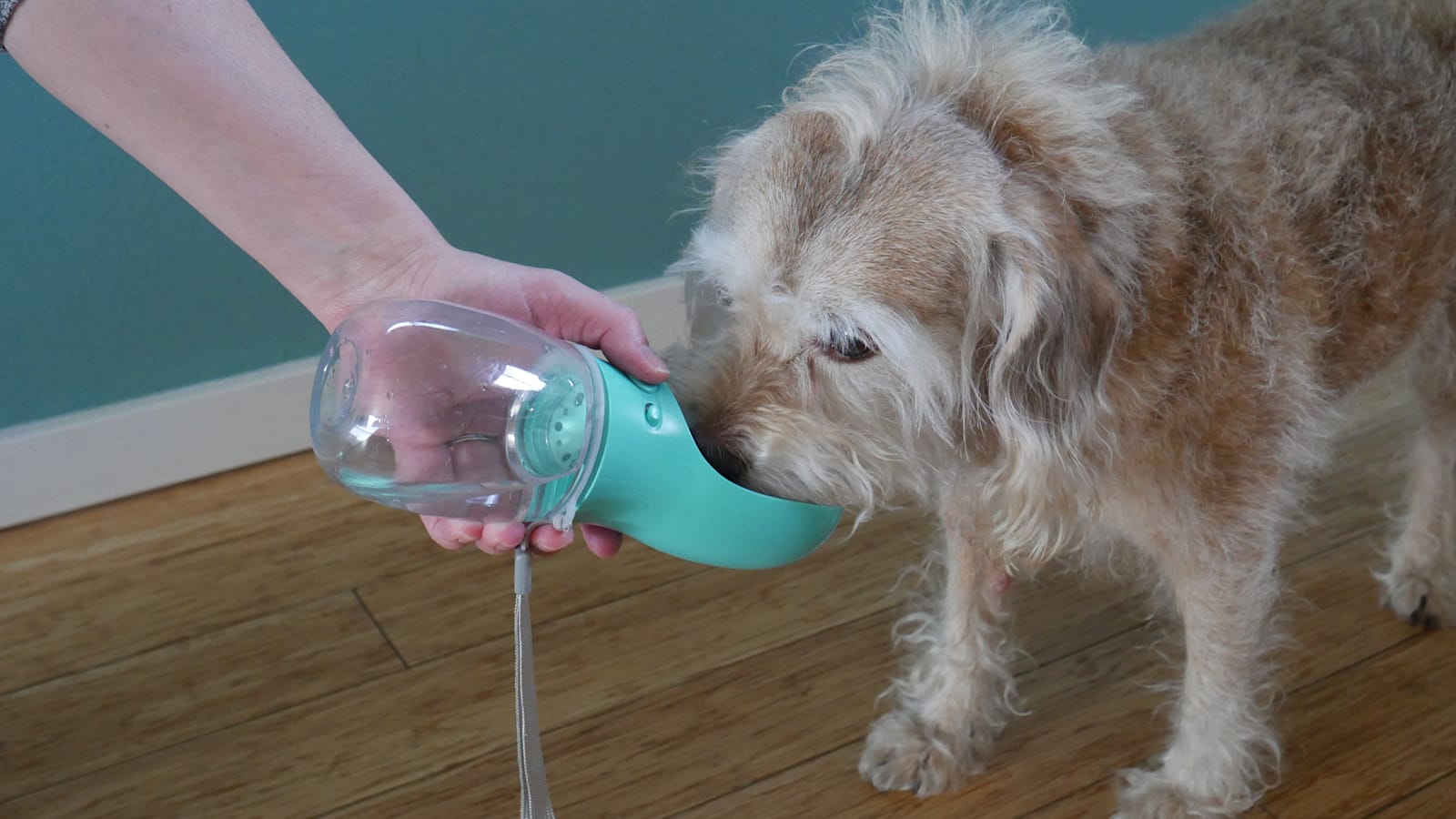7 tips for a road trip with your dog

It’s never been more common to travel with your four-legged friends. They’re part of your family after all, and besides wanting their continued company and to share your adventures with them, dog sitting costs a lot. Staying with a stranger can also be stressful for certain dogs.
Really, we don’t need to tell you the reasons for bringing your dogs along. If you’re reading this, you already know why! Here at Autoblog, most of our editors have dogs, and we routinely travel with them. Some are big, some are small, one is really small. In fact, the pictures you see are of my very own dogs, Maggie and Nellie, during various road trip adventures over the years.
With a little help with reporting from the Associated Press, we’ve put together this list of tips for road tripping with your dog, including tips and advice we’ve picked up over the years. In particular, tips on where to stay, suggested research and gear recommendations.
Ultimately, road tripping with your dog can be challenging. I’ve driven from Los Angeles to Toronto and back with those two girls up there, in the middle of winter no less, and I know first hand the headaches. Hopefully these tips can help alleviate some of those for you.
1. Teach them to love the car
Long before your road trip, give your dog positive associations with the car.
“Practice makes better,” says Erdem Tuncsiper, who runs P.A.C.K. Leaders Dog Training in Chicago. “Don’t make your big trip their first trip.”
Take them on as many local drives as possible, and give them treats and toys to make the car fun. Drive them to exciting places so they don’t see the car as a direct-to-vet delivery mobile.
If a dog is apprehensive, pet parents “can encourage further engagement with the car by rewarding all interaction directed toward the vehicle — such as looking at, sniffing, moving toward or stepping into — and proceeding with baby steps from there,” says Darris Cooper, national dog training manager at Petco.
Bring along items like bowls and blankets that your dog is not only used to, but finds comforting, says Tuncsiper.
“This includes anything for sleeping, eating or drinking,” he says.
2. Keep your dog as comfortable as possible
“Make sure your dog is not stressed by the sights, sounds or movement of the vehicle,” says Dr. Natalie Marks, a veterinarian at Chicago’s VCA Blum Animal Hospital. “There are lots of additions that can help reduce stress, like playing classical music, spraying pheromones to help relaxation, … appropriate restraint device training, favorite treats and not feeding at least two hours before the start of travel to help avoid nausea.”
Dogs also overheat easily, so provide good ventilation (and never leave them alone in a parked car).
“If your dog pants a lot, he is hotter than you are and needs air,” Tuncsiper said.
Excessive panting can also be a sign of anxiety. If your dog just can’t seem to get comfortable, speak to your vet about anti-anxiety medications, as well as over-the-counter chews and drops.
In terms of physical comfort, we’ve found that bringing a dog bed into the car is a great idea for those with small or medium dogs. Car seats are meant for humans, not dogs, so the dog bed can make this comfier and more familiar for them. You can also still secure them using a safety harness.
3. Expect the trip to take longer
Dogs need regular stops to run around, relieve themselves and explore all the new, exciting smells.
“We have a two- or three-hour drive-time rule in our family,” says Christina Howitt, co-founder of Find Your Blue, a Kansas City-based travel company specializing in dog-friendly itineraries. “We always make a point to add frequent stops … We also try to avoid driving more than five or six hours total in a day.”

4. Find dog-friendly spots in advance
Traveling with a dog requires more advance planning and less spontaneity.
“Do your research ahead of time, especially for hotels and sightseeing,” advises dog owner Leksa Pravdic, who drove with her dogs, Scout and Pluto, from their home in Chicago to New Mexico, Arizona and Colorado. “A lot of national parks don’t allow dogs or limit their access to certain small areas. Look for national monuments or state parks that allow dogs.”
Try looking at photos of upcoming rest stops to see if one might have more grassy areas than another, or even dedicated enclosed dog parks. I have also specifically looked for dog parks in towns along my route with great success. Think about it as a chance for your four-legged buddy to meet the locals.
For hotels, make sure to look closely at each hotel’s pet policy. Many don’t allow dogs at all. Many say they are “pet friendly” but there are significant conditions. First, they often put limits on the size or number of dogs. Second, there are also almost always pet cleaning fees, which can vary widely. If you can’t find a hotel’s pet fees on its website (it’s often not included on third-party booking sites), make sure to call before booking. Some charge one fee per stay, others charge per dog per stay, others charge per dog per night, which will really adds up.
For vacation rentals, also make sure to look into the fine print of “pet friendly” places (and also make sure the place is pet friendly in the first place). Most also charge extra fees and have restrictions on size, number and even breed. Still, these can definitely be superior as they can have yards (make sure they’re fully enclosed) and are generally less stressful than a hotel filled with opening and closing doors, people walking outside your room, and — gasp! — other dogs. Bark.

5. Pack your pup’s suitcase responsibly
Dogs need a lot of stuff when they travel. Marks says the checklist should include medications, vaccination records, a canine first-aid kit, an extra leash and collar, their ID tag, a crate (in case you need to leave your dog alone where you’re staying) and collapsible bowls.
Bring at least two days’ worth of extra food and water.
There are no shortage of collapsible, travel-friendly water bowls out there. However, we’ve found the MalsiPree Dog Water Bottle to be a game-changing product for road trips (pictured above). By pushing a button, you can slowly dole out water as needed. This reduces the chances of water sloshing out in your car and wasting the limited water you have on board when your dog inevitably doesn’t want to drink it all.

6. Safety is important
It’s important to consider your pet’s safety while traveling in the car. You buckle up, you’d buckle up children, why do you want to risk your dog being injured or killed in an accident? Furthermore, they could injure you as a heavy in-car projectile during an accident, and can even cause an accident in the first place should they be in the driver seat or distracting you in some way. Seriously, never drive with your dog in lap.
As such, consider a dog harness for the passenger compartment, a dog-intended cargo area fence accessory or cargo area kennel. For a dog harness, we highly suggest doing research. Many will claim to secure a dog in a car, but haven’t actually been certified for that task (in other words, they don’t really do the job). While it’s nice that you’ll see products advertising that they’ve been “crash tested,” it’s rare they actually say how they did in those crash tests. Imagine if car advertisements did that.
If anything, look closely into how those tests were conducted and whether it looks legit. Unfortunately, there’s little reliable third-party data as you’d find for cars or child seats. The Sleepypod Clickit and Zugopet The Rocketeer received a Center for Pet Safety approval for their crash testing performance several years ago, but that’s about it at the moment. I bought my car harnesses seven years ago based on a third-party test I can no longer find on the internet (sorry), and although they weren’t the most safe, they were more comfortable and still performed sufficiently in a crash. This lack of data may be disappointing, but don’t let that dissuade you. Restraining your dog is safe for them and safe for you.
7. How to clean the car after the trip
So, you’ve had a great trip with your dog … unfortunately, your dog has now been in your car for an extended period of time. That mean it could be a bit stinky (good grief, Nellie, your breath!) and absolutely slathered in dog hair (good grief, Maggie, your fur!).
A simple hand-held vacuum with pet attachment you already have for the house might be good enough to get the job done, but there’s a good chance it won’t be. For a really thorough job, check our video guide for How to Remove Dog Hair From Car Interiors below.
Features reporting from the Associated Press



